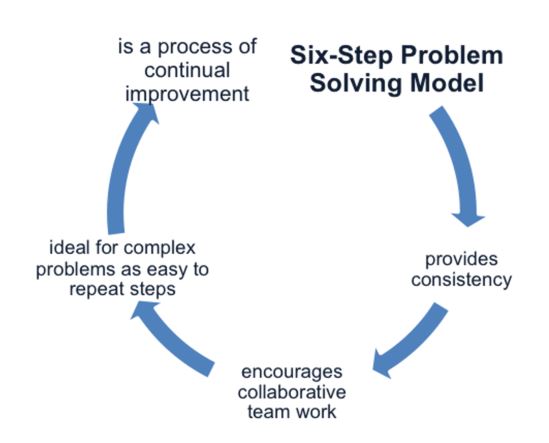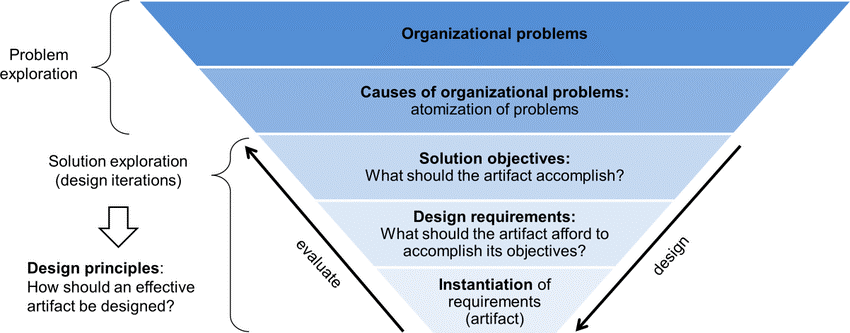Most of what managers do is to make decisions and solve problems. Often, managers are under stress and with limited time to make critical decisions in an organization. Consequently, when managers encounter a new decision or a problem they must solve, they react with decisions that seemed to work before. Sometimes, this approach can put you in a loop of solving the same problem over and over. It is often more useful to get used to an organized approach to solving problems and making decisions. Not all decisions can be made and problems solved following a rational approach. However, we have a few guidelines that will help managers to get started. You shouldn’t be intimidated by the length of our guidelines because they will make you a better manager.
After you have practiced our guidelines, they will become easy for you. You can utilize them to suit your own needs. It is better for managers to view a problem as an opportunity. Here are the best steps to help managers make better decisions and solve problems effectively.

Define the problem
Most people struggle to define a problem. In most cases, they react to opinions and what they think the problem is. It is better to understand more about the problem before making a decision. You can define a problem with input from others and yourself. Here are a few questions you need to ask yourself and others when defining a problem.
• What makes you think there is a problem?
• How is it happening?
• Where is it happening?
• How is it happening?
• Why is it happening?
After asking all the relevant questions, you can write down the description of the problem. Write down what triggered the problem to happen, where the problem happened, why it happened and the people it affected.
How to define complex problems
It is good to understand that problems are different. We have complex and simple problems. Complex problems require more materials and input to get solved. If the problem seems to be overwhelming, you should break it down by repeating the above steps. You should verify how you understand the problem. Use tools like Mindmaps to help you define the scope.
Prioritize the problem
In some cases, managers find themselves dealing with different problems. If this is the case, it is important to prioritize the problems and know which problems to address first. You should know the difference between urgent and important problems.
Often, what most managers consider to be important problems are in real sense urgent problems. You need to give important problems more attention. For example, if you are dealing with phone calls, it is important to design your system to prioritize on urgent phone calls.
Understand the role of people in the problem
The role of the manager in the problem can influence how the manager perceives the role of others. Sometimes, if you feel too guilty about your role in the problem, you will ignore the accountability of other people. Also, some managers get blinded so much by the role other people play in a problem that they forget that they also have a role in the problem.
Find the potential causes of the problem

You don’t know a lot about what you don’t know. It is, therefore, crucial to get input from others because they may be affected by the problem as well. You should collect input from other people one at a time. Write down what you have read from other people and your opinions. Write down a clear description of the cause of the problem in terms of what is happening, when it is happening, where it is happening and why it is happening.
Identify alternatives for resolving the problem
When you get at this point, it is helpful to keep other people involved unless you have a personal employee problem. You need to brainstorm and collect many ideas and screen them to find the best ideas. It is crucial when collecting these ideas to not pass judgment on the ideas. You should write the ideas down as you hear them.
Select an approach to solving the problem
You should choose the best approach to solve your problem for a long time. Some solutions are just for a short time and won’t be helpful to your business. Also, it is important to choose a solution that is realistic to accomplish. You should know whether you have the resources to solve the problem and if you have enough time to implement your approach. Consider the extent of the risk that comes with each alternative.
Have a plan for implementing the best alternative
You should consider what the situation will look like when you have solved the problems. Know the steps that you need to take to implement the best alternative solution. Know the processes or the systems you need to change in your organization to ensure that the solution is effective. Managers should make sure that the steps are being followed to solve the problem. You will need resources in terms of money, people and facilities to solve the problems. It is also crucial to know the time needed to implement the solution and write a schedule to include the start and stop time. In most cases, managers choose other people to be responsible for solving the problem. If this is the case, you should know the responsible persons in solving the problem.
If other people are involved in solving the problem, you should communicate the plan to them and ensure that they follow the plan by supervising them.
Verify if the problem has been solved
Managers should always verify if the problem has been solved and one of the best ways to verifying is to resume normal operations in your organization. You should consider the changes that need to be made to prevent the problem from re-occurring in the future. You should consider training, changing policies and putting procedures in place to prevent the problem from happening again. After solving a problem, managers should learn many things from the process. A brief memo can help to highlight the success of the solution.
About Author
Latest posts by Hutch Morzaria (see all)
- The World of CX - January 22, 2022
- Cultivate a Customer-Centric Culture - September 30, 2021
- 7 Ways to Guarantee Your Team Will Be Highly Engaged - September 3, 2021





More Stories
Guidelines to Decision Making and Problem-solving in an Organization
Guidelines to Decision Making and Problem-solving in an Organization
Guidelines to Decision Making and Problem-solving in an Organization